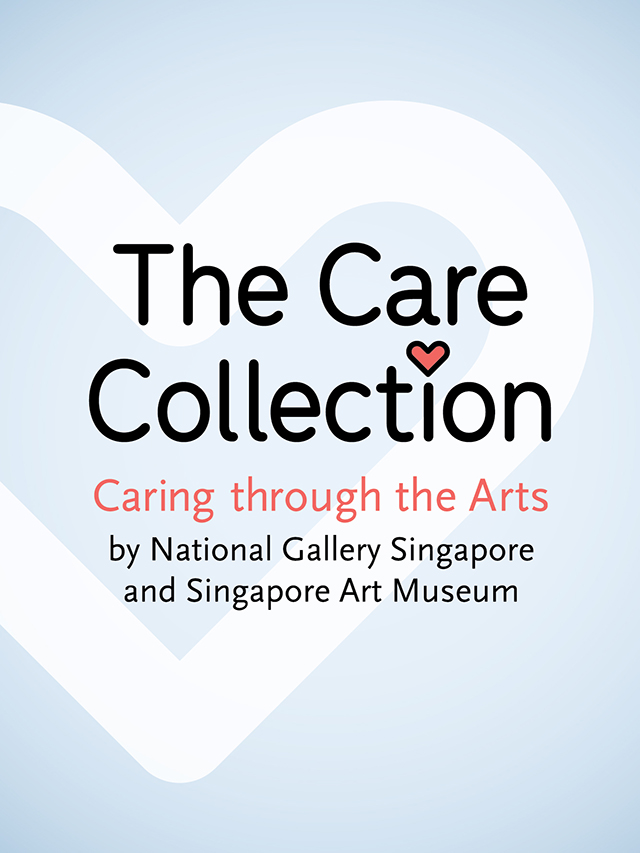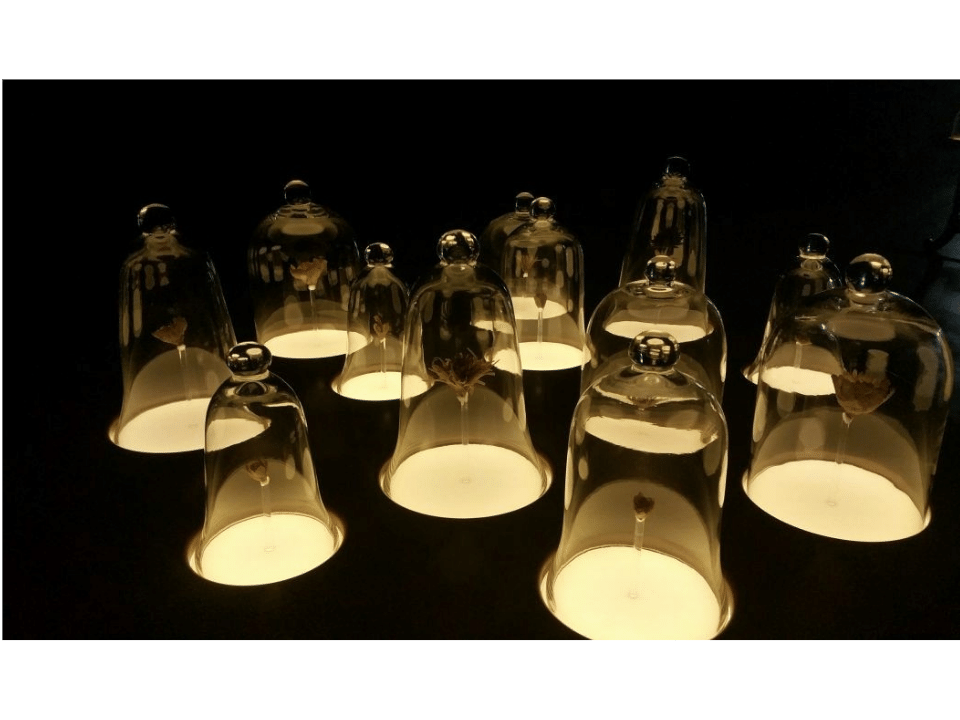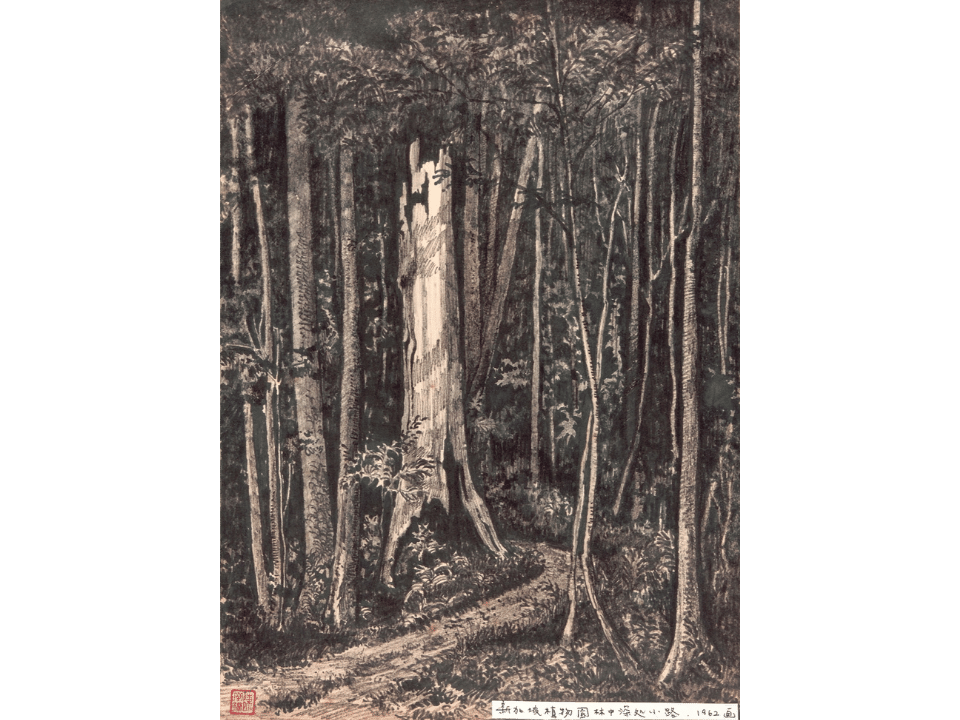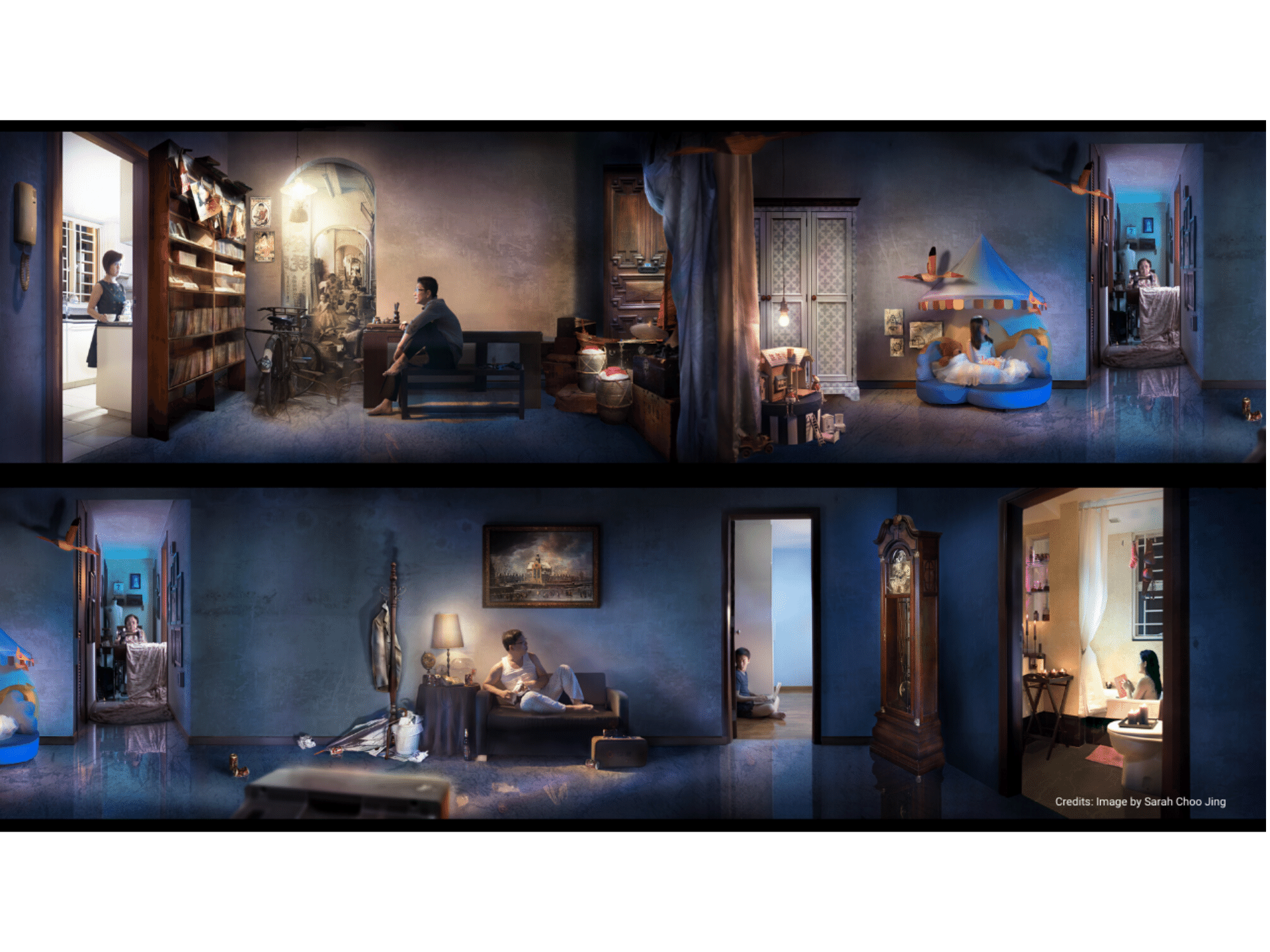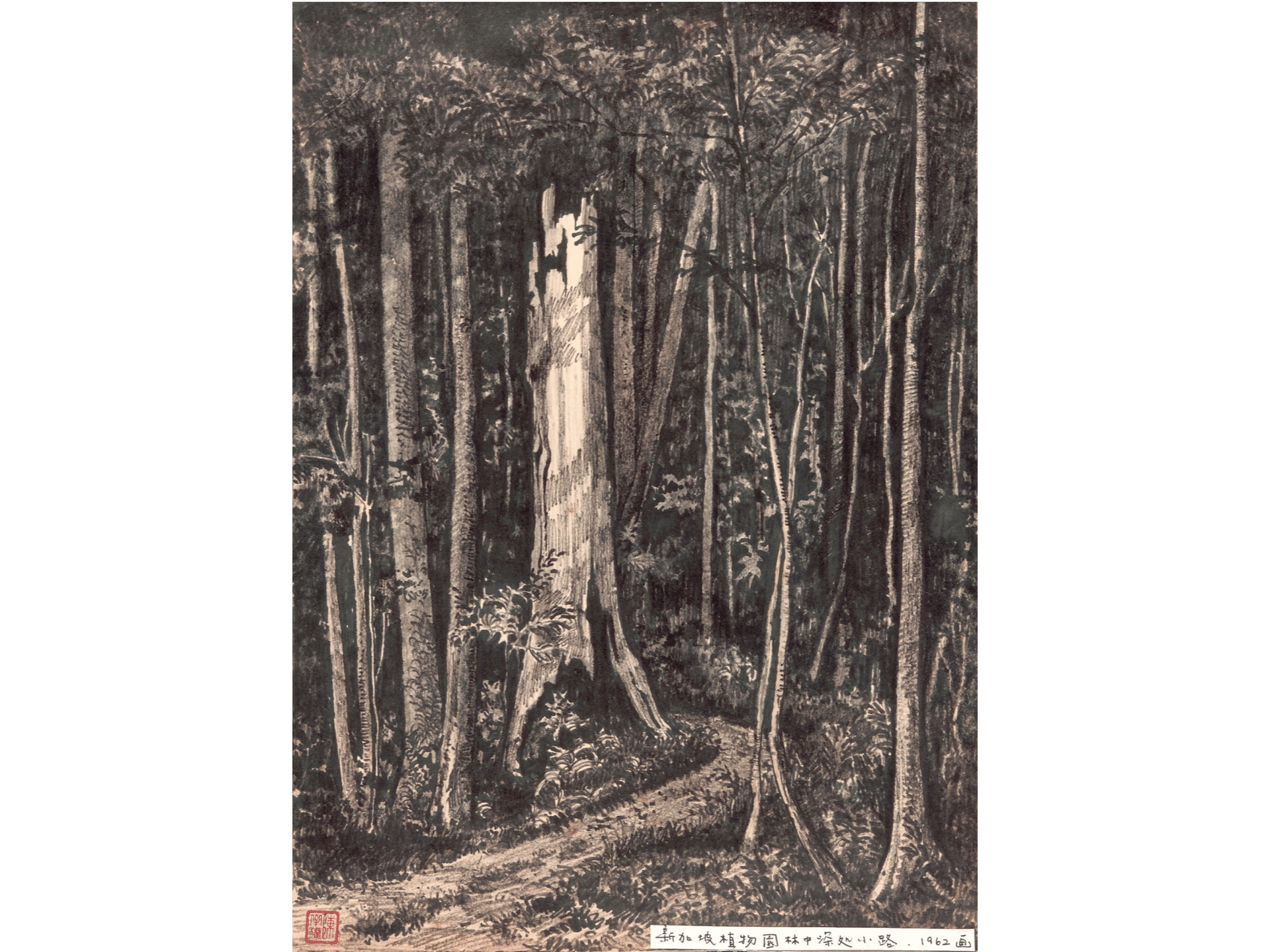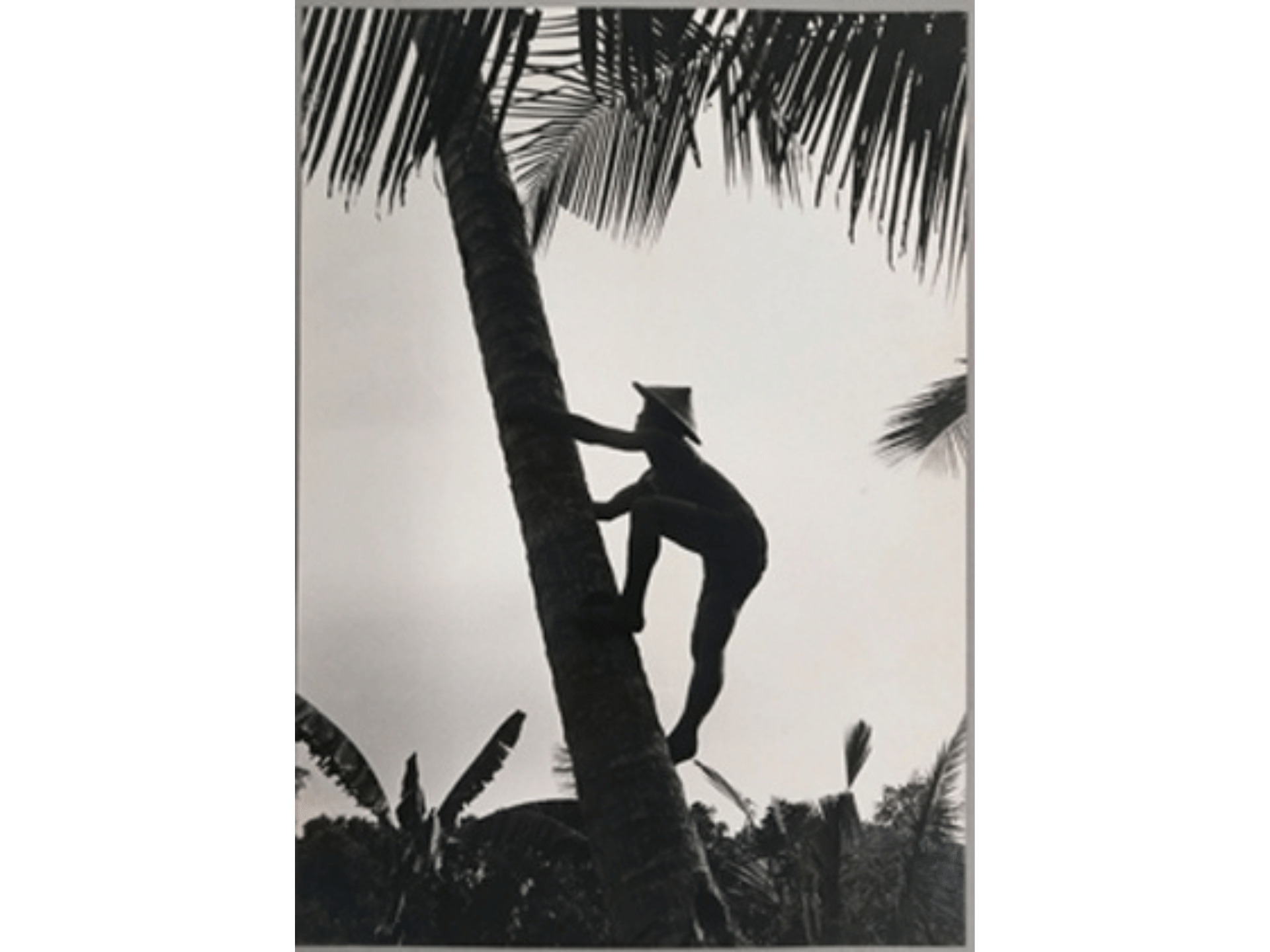The Care Collection
ACCESS PROGRAMME
Since the onset of COVID-19, our healthcare workers have been working tirelessly to keep everyone in Singapore safe and many will need mindful self-care for stress reduction and burnout prevention. Art is a powerful tool that can bring comfort and relief from the everyday. To support the mental wellbeing of our healthcare workers, National Gallery Singapore and SAM have come together to develop The Care Collection: Caring through the Arts for SingHealth’s iTHRIVE ARTpreciate art therapy programme.
The Care Collection features a selection of artworks from the National Collection specially curated by curators from the Gallery and SAM. The artworks are selected based on seven themes: Courage, Connection/Disconnection, Resilience, Hope, Growth, Self-Love/Self-Compassion and Being in the Present.
Highlights
2015 | Variable | Artist’s skin, nails and adhesive, second-hand furniture and glass bell jars | Collection of Singapore Art Museum
2013 | Multimedia installation | 1 min 5 secs (looped), dimensions variable | Edition 3 of 5 | Collection of Singapore Art Museum
c. 1842 | Oil on canvas laid down on board | 38.0 x 44.0 cm | Collection of National Gallery Singapore
1962 | Ink on paper | 36.4 x 26.3 cm | Gift of Ms Tan Teng Teng | Collection of National Gallery Singapore
c. 1960s–1970s | Gelatin silver print | 40.5 x 29.0 cm | Collection of National Gallery Singapore
Ezzam Rahman presents an installation of delicate flowers made from dead skin from the soles of his feet. At the heart of this disquieting work lies Rahman’s contemplation on life and ideas of worth as embodied by the detritus of his breathing body. The use of skin as material here evokes the performativity and physical sensation of the act of cutting the skin, suggesting both pain and beauty. At the same time, these fragments suggest the presence of a body that had once occupied a space, a body that becomes temporarily present again through the traces and memories left behind. Weaving together ideas of presence and absence, Here’s who I am, I am what you see is an intimate and personal response to the longing for visibility and remembrance.
THEME: CONNECTION / DISCONNECTION
Another Woman is Amanda Heng’s most seminal work which was executed over a year, involving installation, performance and photography. An exploration of the artist’s relationship with her mother, the work can also be seen as an investigation into the domestic realm of women within the traditional Chinese family. The mother and daughter photographs, both clothed and nude, are aimed at exploring the relationship between the two, as well as their identities as independent women. At the same time, it can be seen as the artist’s way of reclaiming intimate mother-daughter ties, often unspoken within the traditional Chinese family psyche. The work includes an installation component, where Heng deploys photography and assemblages of objects as a means of investigating memory.
THEME: CONNECTION / DISCONNECTION
The Hidden Dimension II depicts seven family members going about their daily routine and tasks in individual rooms and sections of a house, played on a seemingly endless loop. The viewer is given an introspective, almost voyeuristic peek into the private spaces and lives of the family, the various objects surrounding them acting as clues to their personalities and reflecting familial archetypes.
This multimedia installation can be viewed as a commentary on the modern conundrum of solitude in a densely populated city, with the family in this work representing a microcosm of a society where people live closely together in a common, shared space but could not be further apart in terms of their absence of contact and lack of communication with one other.
THEME: CONNECTION / DISCONNECTION
This painting depicts a ship caught in a violent storm, appearing powerless against the rocky waves. While the fate of this ship is uncertain, a faint hint of another ship approaching in the background suggests rescue could be near.
Raden Saleh (c. 1811-1880) is widely regarded as the first modern painter in Indonesia (then known as the Dutch East Indies). He spent over 20 years in Europe as an artist and despite being a colonial subject, showed he could equal his European contemporaries. Having travelled across the ocean from Java, he would have experienced first-hand some anxious moments at sea, and observed the North Sea closely while living in Holland. The varied treatment of the skies, waves and harsh winds also demonstrates his familiarity with marine art, a genre in Dutch painting from the 17th century that often exalted Dutch maritime trade and the colonial project.
THEME: COURAGE
This work shows a dense forest—tree trunks which stretch nearly across the whole paper, one trunk after another. There is no human figure in sight and perhaps the artist was alone when he came across this scene. To be alone in a deep forest, especially for a long period as evidenced by the detail in his sketch, can take great courage.
Born in 1933 in Singapore, Tan Choo Kuan was trained in Western Art at Singapore’s Nanyang Academy of Fine Arts. He is a dedicated art teacher and prolific artist. As an artist but more so as a landscape painter, Tan was strongly informed and inspired by the Russian landscape painter Ivan (1832-98) who wrote in his diary: “A landscape painter is a perfect artist. He feels deeply, purer.” These words share Tan’s sentiments when he says of himself in his 1979 catalogue: “I favour scenery sketching very much, so it does not matter to me even if someone thinks that sketching is a trivial form of art. I stick to a simple belief: I love it, I have to be always close to it.” Despite the perception his preferred form of art was trivial, Tan persisted in his love for sketching.
THEME: COURAGE
In this photograph, the climbing figure ascending a coconut tree trunk is likely a coconut harvester. The use of light and shadow in this photograph adds a sense of action and dynamism to the subject photographed.
Tiag Ming was an amateur photographer well-known in the salon photography movement in Singapore between the 1960s and 1970s. He was awarded the Associate of the Royal Photographic Society (ARPS) in 1977 and a member of the Photographic Society of Singapore (PSS), serving in the committee for a number of years. Chua was known for a strong realist approach in photographing working-class subjects in various working conditions.
THEME: COURAGE


